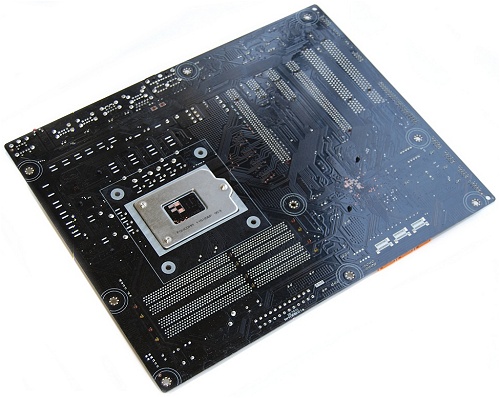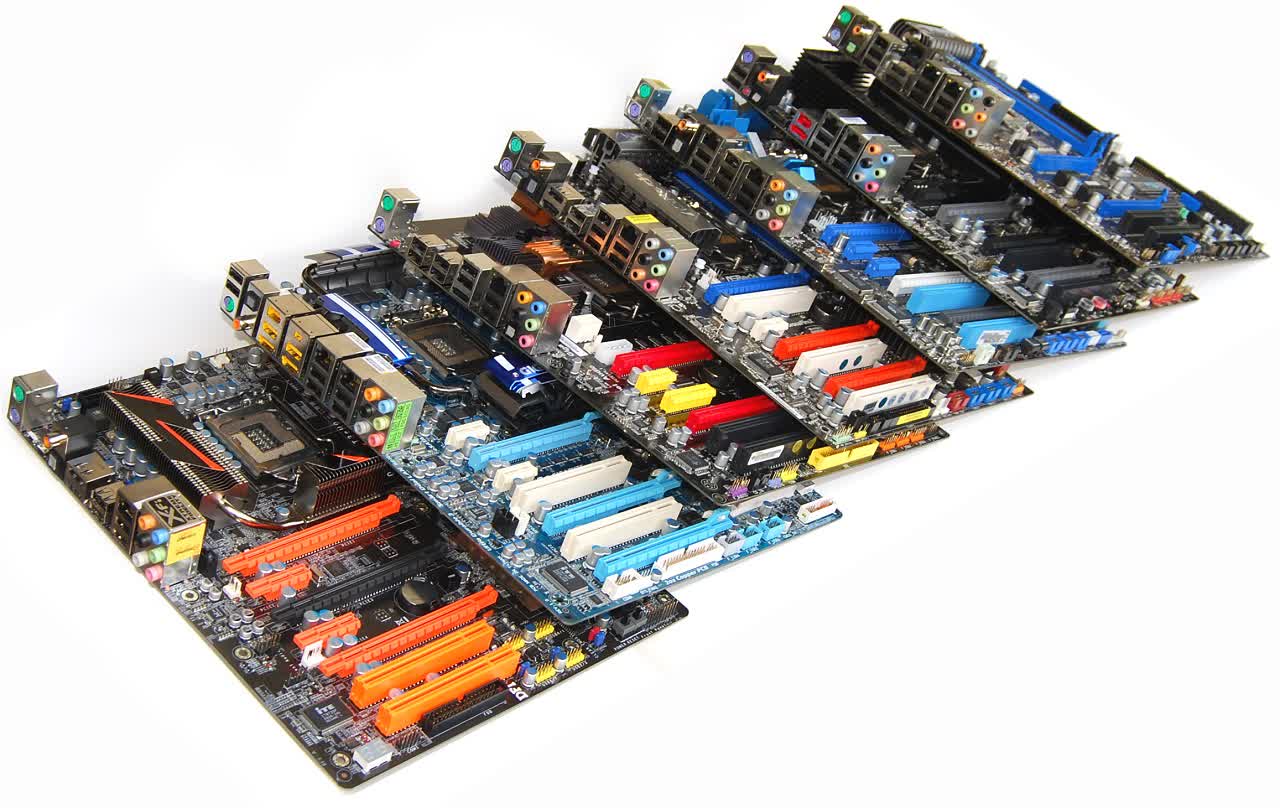ECS P55H-A – Design
The ECS P55H-A is a surprisingly good looking motherboard, which helps it over come the impression of it being a little cheap. However, when compared to the Asrock P55 Extreme which costs just $20 more there are a few noticeable downsides to the design and layout of this motherboard.

At first we were impressed by how much room there was between the four DIMM slots and the primary PCI Express x16 slot. This extra space has been made available due to the fact that the ECS P55H-A features just two PCI Express x16 slots instead of three. There's also one PCIe x1 slot and one PCIe x4 slot along with a pair of conventional PCI slots at the bottom of the board.


While the ECS P55H-A is not quite as well equipped as the other P55 motherboards we have looked at so far in terms of expansion, it does manage provide enough room to expand for the average user. The same can be said about the board's storage capabilities as there are just six onboard SATA ports, though we are happy to report that they have been mounted at a 90-degree angle.
For the most part the design of the P55H-A is great which makes our one and only real issue a little frustrating. For some reason ECS has positioned the 8-pin ATX 12v power connector in what is almost the worst position possible. Rather than locating this power connector on the top left hand corner of the motherboard as virtually every other manufacturer has done, ECS decided to stick it above the primary PCIe x16 slot.
This is not exactly the end of the world but it does make installation slightly more difficult as users have to run the thick power cable half way across the motherboard past the CPU cooler. This is a disappointing design flaw by ECS but it is really the only blemish on the P55H-A's report card.

ECS has also gone with a small passive heatsink for the P55 chip which they have labeled "Black Series." The board's power circuitry is cooled via two separate heatsinks. None of the heatsinks use heatpipe technology though truth be told we do not feel it is necessary anyway.


Delivering and regulating power to the LGA1156 processor is a 4-phase power design while an additional 2-phase power design is used for upcoming processors that feature an on-die GPU. When all is said and done the ECS P55H-A features the weakest PWM design of all the P55 boards included in our roundup, so it will be interesting to see what kind of impact this has on the boards overclocking performance.

Finally when stepping around to the I/O panel we have a pair of PS/2 ports, CMOS reset button, eight USB 2.0 ports, five audio jacks plus a S/PDIF connector along with a single LAN port and eSATA port. Overall the layout and design of the ECS P55H-A is good enough to satisfy most users, particularly those on a tight budget.
